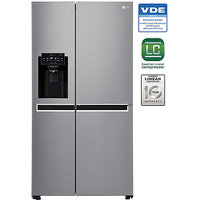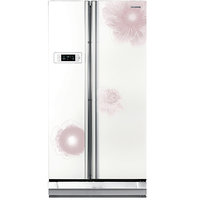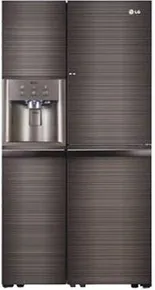what type of coolant is used in refrigerators
The refrigerant is a chemical substance that circulates in the cooling system of an air-conditioning or refrigeration system to absorb heat from the surrounding area and release it into the colder space.
Image source: https://www.flipkart.com/
It does this by absorbing heat from its surroundings through phase change and subsequently releasing it back into the room.
Image source: https://www.reliancedigital.in/
In order to accomplish this, refrigerants must be non-toxic, flammable, and have low volatility so as not to damage equipment such as HVAC (heating, ventilation, and air conditioning) systems.
Image source: https://www.shopclues.com/
They must also not leave an unpleasant odor when they are released. Although most refrigerants are hermetically sealed within a machine, they can still leak out if there is a hole in the machine, causing environmental pollution.
Image source: https://pinterest.com/
Most refrigerants used today function by absorbing a large amount of heat at low temperatures and releasing it as gas to the outside air when temperatures increase. Therefore, refrigeration is the opposite process of heating.
Image source: https://www.amazon.com/
Refrigerants either change from liquid to gas (called vaporization) or from gas to liquid (called condensation) intermittently in order to transfer heat successfully. The two processes occur simultaneously and continuously inside the cooling system.
Image source: https://www.smartprix.com/
While many refrigerants are found in household refrigerators, other common applications for these chemicals include industrial refrigeration and HVAC systems. Refreshing food in a domestic refrigerator is completely different from heating and cooling an entire building, so the functions of refrigerants may be different as well.
Image source: https://rtings.in/
Refrigeration involves transferring heat to keep foods appetizing while industrial systems require cooling large amounts of material to temperatures too low to actually freeze them.
Image source: https://gadgets360.com/
Curtailment is a method of dissipating heat in the cooling system. The reduction of pressure inside the system limits expansion (increase in volume) and prevents contact between the compressor and evaporator, so that heat transfer occurs by conduction instead.
Image source: https://www.reliancedigital.in/
The refrigerant is also vented out of the system, further enhancing heat dissipation. Curtailment reduces the amount of heat transferred inside the system, limiting the temperature and maximizing efficiency.
Image source: https://gadgets360.com/
The most common refrigerants used today are hydrofluorocarbons (HFCs), which replaced chlorofluorocarbons (CFCs) in most applications in the 1990s due to their lower ozone depletion potential.
Image source: https://www.reliancedigital.in/
The most common HFC used today is R-134a. HFCs are typically non-toxic, odorless substances that have a relatively high boiling point of −78 °C (−108 °F).
Image source: https://www.shopclues.com/
This means that the refrigerant does not vaporize very quickly at common room temperature in order to minimize odors during use. This is a trade-off, however, because HFCs are not as effective as other refrigerants which evaporate more quickly.
Image source: https://pinterest.com/
There are other refrigerants used today which have been identified as having lower ozone depletion potentials than HFCs. While they are non-toxic and do make it easier to ensure that the atmosphere is kept clean, these substances have low boiling points and tend to re-vaporize quickly.
Image source: https://www.amazon.com/
Many refrigerants are flammable and will not survive in a high fire. Others, such as HCFCs, are not flammable but can leak out under high pressure.
Image source: https://www.smartprix.com/
Because of this risk, they were phased out in most areas in favor of HFCs (mixed with CO2 to make a non-flammable refrigerant) by 2010. Because HFCs are more volatile than other refrigerants and are longer-lasting, some production facilities retrofitted systems with HFC systems instead of converting to R404A or R744.












Nhận xét
Đăng nhận xét